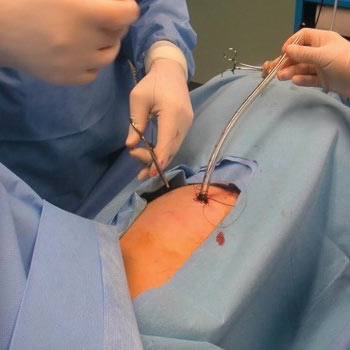pleurodesis
- Home
- Services
- Pulmonology
- pleurodesis
What is Pleurodesis?
Pleurodesis is a medical procedure aimed at treating recurrent pleural effusions or pneumothorax by inducing adhesion between the layers of the pleura, the thin membranes surrounding the lungs. This procedure is crucial in managing conditions that cause fluid or air buildup in the pleural space, ultimately improving respiratory function and reducing symptoms
What are the functions of the pleural space?
The pleural space refers to the area between the visceral and parietal pleura, which normally contains a small amount of lubricating fluid. This fluid helps facilitate smooth movement of the lungs during breathing. However, conditions such as infections, malignancies, or trauma can disrupt this balance, leading to the accumulation of excess fluid (pleural effusion) or air (pneumothorax)

When is Pleurodesis Recommended?
Pleurodesis is typically recommended when conservative treatments fail to manage recurrent pleural effusions or pneumothorax effectively. It is especially beneficial in cases where
- Malignancy-related Effusions: Pleural effusions caused by cancers such as lung cancer, breast cancer, or lymphomas
- Recurrent Infections: Effusions due to infections like pneumonia or tuberculosis
- Chronic Conditions: Conditions like congestive heart failure or cirrhosis that lead to persistent pleural effusions
How Pleurodesis Works?
The goal of pleurodesis is to create adhesions between the visceral and parietal pleura, effectively obliterating the pleural space. This prevents the recurrence of fluid accumulation or air leaks. The procedure involves
Preparation
Patients are evaluated to determine their candidacy for pleurodesis through imaging tests like chest X-rays or CT scans.
Procedure
Pleurodesis can be performed through various methods
- Chemical Agents: Such as talc or tetracycline, which are instilled into the pleural space to induce inflammation and subsequent adhesion formation
- Mechanical Abrasion: Direct mechanical or surgical abrasion of the pleural surfaces to promote adhesion
- Surgery: Video-assisted thoracoscopic surgery (VATS) or thoracotomy may be necessary in complex cases
Post-Procedure Care
After pleurodesis, patients are monitored closely for complications like fever, chest pain, or respiratory distress. Chest tubes may be left in place temporarily to drain any residual fluid or air
Benefits
- Effective Symptom Relief: Reduction in dyspnea (shortness of breath) and chest discomfort
- Prevention of Recurrence: Lower rates of recurrent pleural effusions or pneumothorax
- Improved Quality of Life: Enhanced respiratory function and reduced hospitalizations
Pleurodesis is a valuable intervention in managing recurrent pleural effusions and pneumothorax, offering significant benefits in symptom control and reducing the need for repeated treatments. As with any medical procedure, thorough evaluation and discussion with healthcare providers are essential to determine the most appropriate treatment approach for individual patients.
In summary, pleurodesis plays a crucial role in pulmonary medicine by addressing challenging pleural conditions, promoting better respiratory health, and improving patients' overall quality of life.
